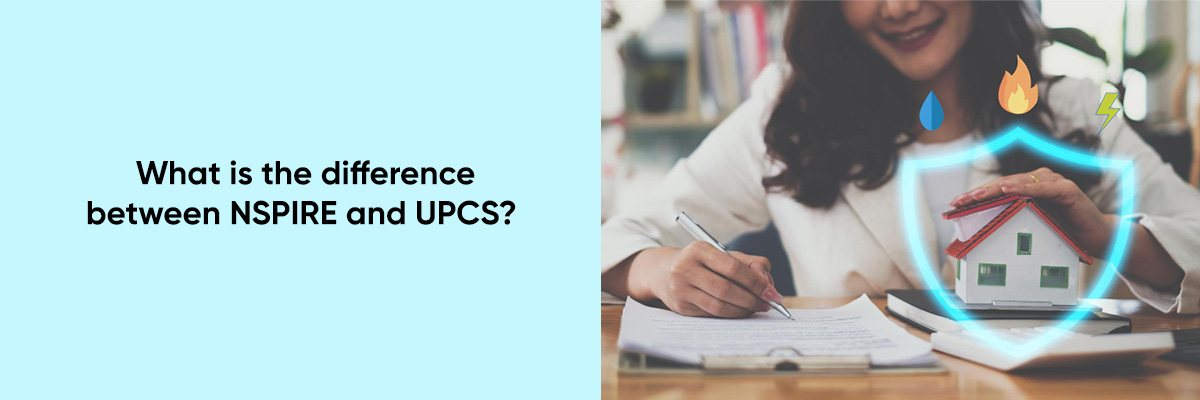In affordable housing, two significant inspection protocols shape properties’ quality and safety standards across the United States: NSPIRE (National Standards for the Physical Inspection of Real Estate) and UPCS (Uniform Physical Condition Standards).
These protocols serve as critical tools for ensuring that subsidized housing meets regulatory requirements and provides residents with safe, decent living conditions.
Mastering NSPIRE and understanding the distinctions between NSPIRE and UPCS is essential for stakeholders in the affordable housing sector, including property owners, managers, tenants, and policymakers.



Let’s delve into the details of each and explore their respective impacts on affordable housing.
NSPIRE: Enhancing Inspection Standards for the Future
NSPIRE represents a modernization of the inspection process, aiming to improve the effectiveness and efficiency of evaluating housing quality. Developed by the Department of Housing and Urban Development (HUD), NSPIRE replaces the previous protocol, the Housing Quality Standards (HQS). Unlike its predecessor, NSPIRE adopts a more holistic approach to inspections, focusing not only on physical conditions but also on the overall well-being and livability of the housing units.
Key Features of NSPIRE:
- Risk-Based Inspections: NSPIRE employs a risk-based approach, prioritizing inspections based on factors such as property history, location, and resident feedback. This targeted approach allows for more efficient allocation of resources while ensuring that properties with higher risks receive appropriate scrutiny.
- Comprehensive Assessment: In addition to assessing structural integrity and safety, NSPIRE evaluates aspects such as environmental health, accessibility, and resident satisfaction. This broader scope reflects a shift towards addressing the diverse needs of residents and promoting equitable living conditions.
- Performance-Based Metrics: NSPIRE introduces performance metrics to measure the effectiveness of housing interventions and track improvements over time. By focusing on outcomes rather than just compliance with regulations, this approach encourages continuous improvement and innovation in affordable housing management.
UPCS: Established Standards for Uniformity and Consistency
UPCS has long been the cornerstone of federal housing inspections, providing a standardized framework for assessing the physical conditions of properties. Developed by HUD, UPCS sets forth minimum requirements that subsidized housing must meet to qualify for federal assistance. While NSPIRE represents a departure from traditional inspection methods, UPCS continues to play a vital role in ensuring baseline standards of habitability and safety.
Key Features of UPCS:
- Uniform Criteria: UPCS establishes uniform criteria for evaluating the condition of housing units, focusing on areas such as sanitation, structural integrity, and mechanical systems. This consistency enables comparisons across different properties and ensures a fair and transparent inspection process.
- Regulatory Compliance: UPCS serves as a regulatory tool, ensuring that subsidized housing adheres to federal regulations and program requirements. By holding property owners accountable for maintaining acceptable living conditions, UPCS helps safeguard the rights and well-being of residents.
- Enforcement Mechanisms: Non-compliance with UPCS standards can result in penalties, sanctions, or even termination of federal assistance. This enforcement mechanism incentivizes property owners to prioritize maintenance and repairs, thereby minimizing health and safety hazards for tenants.
Comparing NSPIRE and UPCS: Bridging the Gap for Better Housing Quality
While NSPIRE and UPCS share the common goal of promoting safe and decent housing, they differ in their approach and focus areas. NSPIRE represents a paradigm shift towards holistic inspections that consider not only physical conditions but also resident well-being and community integration. In contrast, UPCS maintains a more traditional emphasis on uniform standards and regulatory compliance.
Understanding the distinctions between NSPIRE and UPCS is crucial for stakeholders in the affordable housing sector. Property owners and managers must adapt to the evolving landscape of inspection protocols, leveraging the strengths of each approach to improve housing quality and resident satisfaction. Likewise, policymakers and advocates can use this knowledge to advocate for policies that prioritize equitable housing access and address the diverse needs of communities across the nation.
Conclusion:
In the complex tapestry of affordable housing, inspection protocols like NSPIRE and UPCS serve as vital threads, weaving together standards of quality, safety, and accountability. By understanding the differences between these protocols and their respective impacts, stakeholders can work collaboratively to ensure that every individual and family has access to housing that is not only affordable but also dignified and secure. As we navigate the challenges and opportunities of the affordable housing landscape, let us remain steadfast in our commitment to building communities where everyone can thrive.


